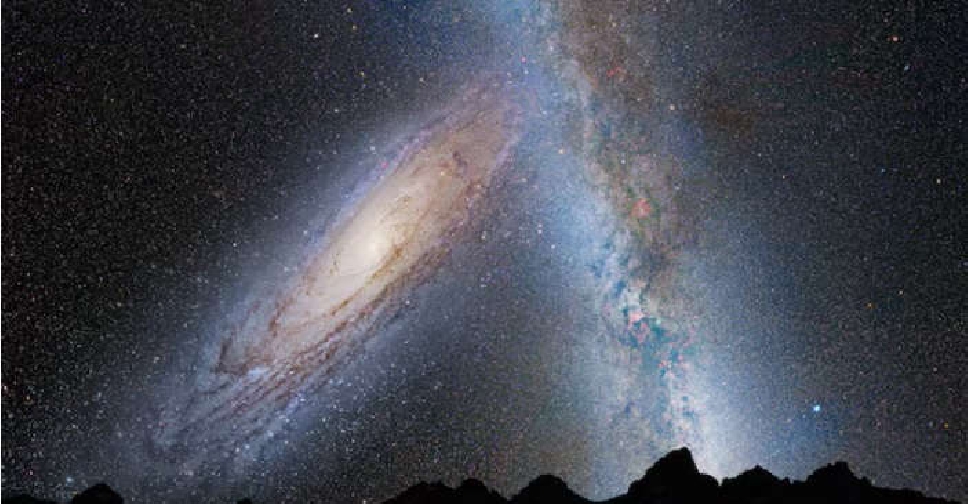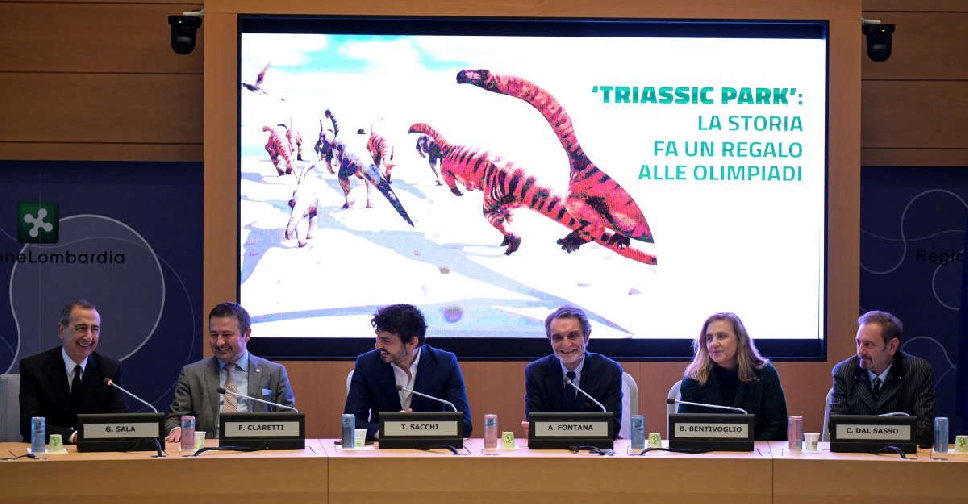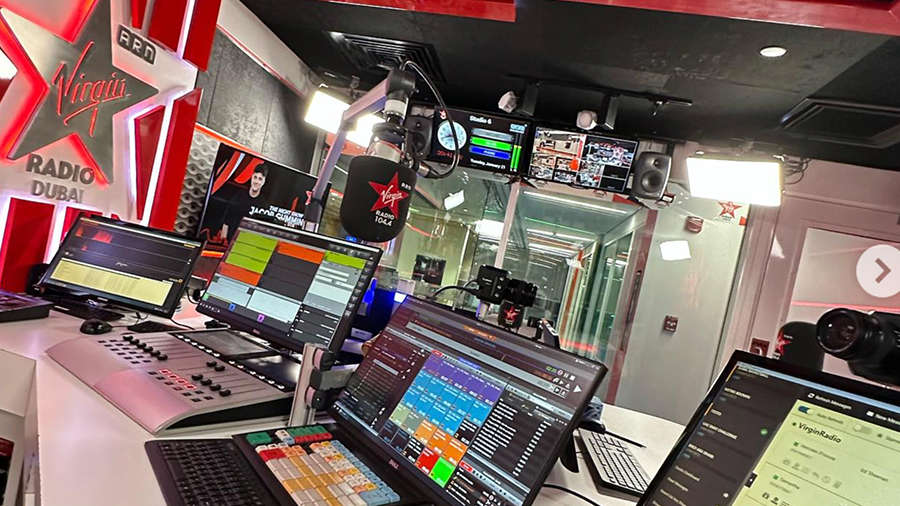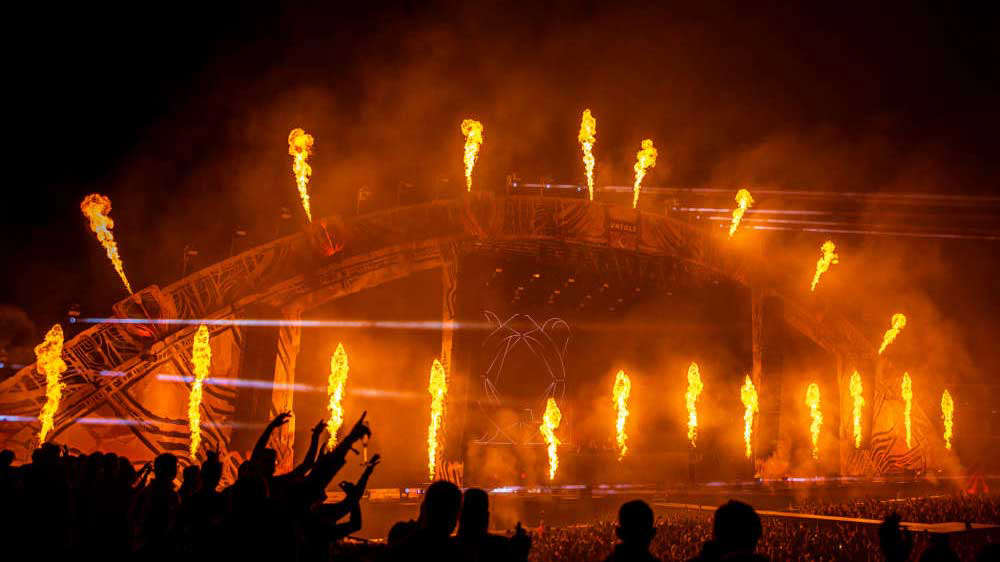
The Milky Way and the neighboring Andromeda galaxy are currently hurtling through space toward each other at a speed of about 400,000 kph, setting up a possible future galactic collision that would wreck both of them.
But how likely is this cosmic crash? While previous research forecast it to occur roughly 4-4.5 billion years from now, a new study that uses recent observational data and adds fresh variables indicates that a collision is far from certain. It puts the likelihood of a collision in the next 5 billion years at less than 2% and one in the next 10 billion years at about 50 per cent.
Galactic mergers are not like a demolition derby, with stars and planets crashing into each other, but rather a complicated blending on an immense scale.
"The future collision - if it happens - would be the end of both the Milky Way and Andromeda," said University of Helsinki astrophysicist Till Sawala, lead author of the study published on Monday in the journal Nature Astronomy, with the structure of both being destroyed and a new galaxy with an elliptical shape arising from the merger.
"If a merger happens, it is more likely to occur 7-8 billion years in the future. But we find that based on the current data, we cannot predict the time of a merger, if it happens at all," Sawala said.
The two galaxies currently are around 2.5 billion light-years from each other. A light-year is the distance light travels in a year, 9.5 trillion km.
The potential collision is so far in the future that Earth by that time is forecast to become a completely different kind of place. Our planet is expected to be rendered uninhabitable roughly a billion years from now, with the sun becoming so hot that it will boil away our planet's oceans.The sun is one of the Milky Way's many billions of stars. The total mass of our spiral-shaped galaxy - including its stars and interstellar gas as well as its dark matter, which is invisible material whose presence is revealed by its gravitational effects - is estimated at approximately one trillion times the mass of the sun.
The Andromeda galaxy has a shape and total mass similar to the Milky Way's.
The researchers simulated the Milky Way's movement over the next 10 billion years using updated data from the Gaia and Hubble space telescopes and various ground-based telescopes as well as revised galactic mass estimates.
Other nearby galaxies are forecast to factor into whether a collision occurs. Previous research accounted for the gravitational influence of the Triangulum galaxy, also called Messier 33 or M33, which is about half the size of the Milky Way and Andromeda, but did consider the Large Magellanic Cloud, a smaller satellite galaxy of the Milky Way, as this study does.
"We find that if only M33 is added to the two-body system, the chance of a Milky Way-Andromeda merger actually increases, but the inclusion of the Large Magellanic Cloud has the opposite effect," Sawala said.
The researchers concluded that a merger between the Milky Way and the Large Magellanic Cloud is almost certain within the next 2 billion years, long before a potential collision with Andromeda.
One noteworthy difference between the Milky Way and Andromeda is the mass of the supermassive black holes at their centers. The Milky Way's Sagittarius A*, or Sgr A*, is about 4 million times the mass of the sun. Its Andromeda counterpart is about 100 million the sun's mass.
"Collisions between stars are very unlikely, but the two supermassive black holes would sink to the center of the newly formed galaxy, where they would eventually merge," Sawala said.
Galactic mergers have occurred since the universe's early stages and are particularly common in areas of the universe where galaxies are clustered together.
"In the early universe, galaxy mergers were much more frequent, so the first mergers would have occurred very shortly after the first galaxies had formed," Sawala said.
"Minor mergers - with much smaller galaxies - happen more frequently. Indeed, the Milky Way is currently merging with several dwarf galaxies," Sawala said.



 Thousands of dinosaur footprints found near Winter Olympics site
Thousands of dinosaur footprints found near Winter Olympics site
 Japan's last two giant pandas are headed to China and fans just can't bear it
Japan's last two giant pandas are headed to China and fans just can't bear it
 Huge undersea wall dating from 5000 BC found in France
Huge undersea wall dating from 5000 BC found in France
 Koshary, a spicy Egyptian staple, wins UNESCO recognition
Koshary, a spicy Egyptian staple, wins UNESCO recognition
 Boosted by Dubai chocolate craze, Argentina bets on pistachios
Boosted by Dubai chocolate craze, Argentina bets on pistachios




